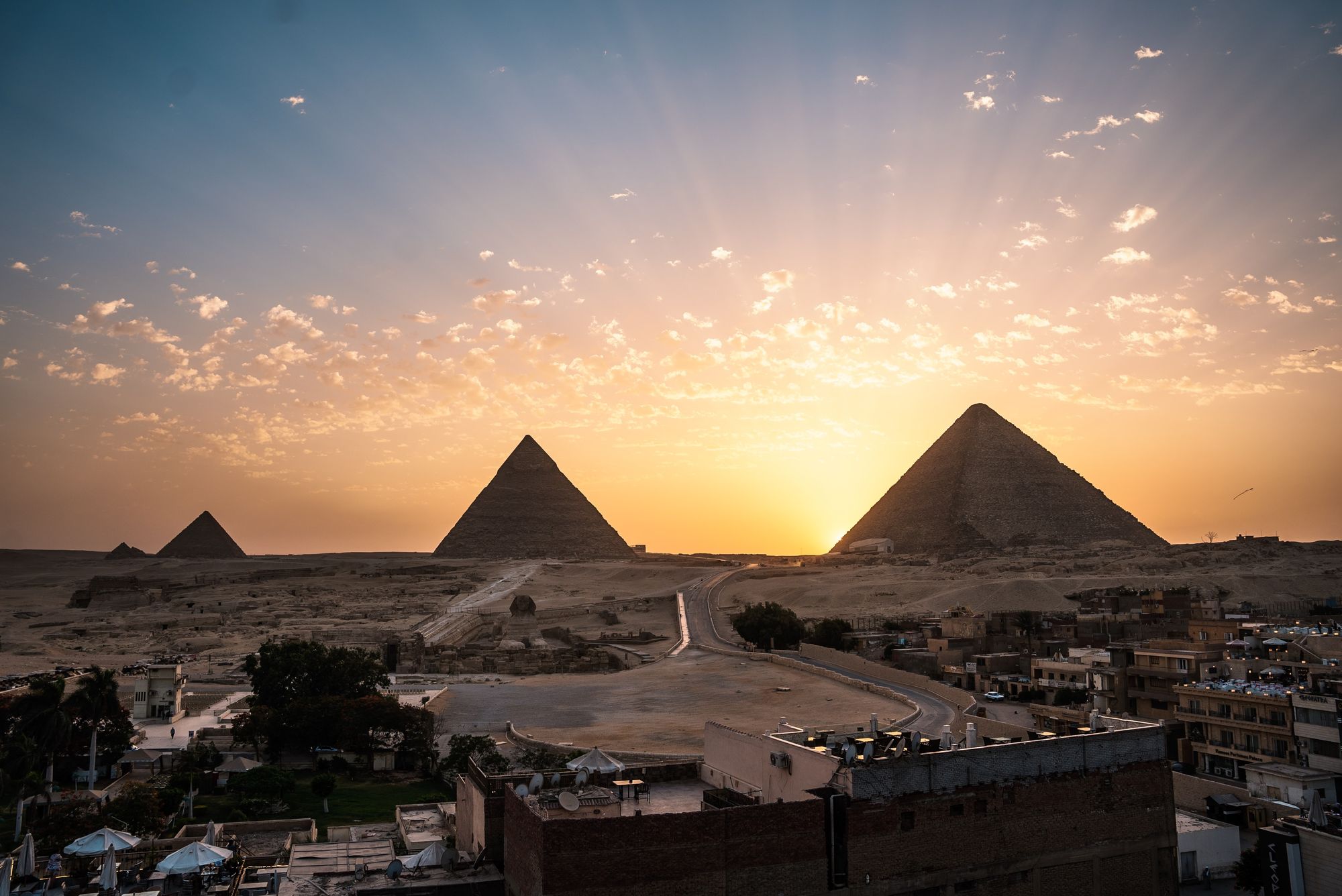
World-Class Architectural Wonders
From ancient ruins to modern marvels, the world is full of awe-inspiring feats of architecture. It can be hard to narrow down so many stunning structures into a list of five, but here are some of the most outstanding architectural wonders that have stood the test of time.
The Pyramids of Giza
Located in Egypt, these majestic pyramids were built around 2560 BCE and are the oldest remaining structures on our list. The Great Pyramid—the largest of them all—was once the tallest manmade structure in the world. It took an estimated 20 years for about 100,000 workers to complete this massive feat of engineering, which stands as a symbol of Ancient Egyptian culture today.
The Pyramids of Giza have been considered one of the world’s oldest, most fascinating, and enduringly iconic wonders since their completion in 2560 BC. These remarkable structures attract visitors from all over the world who marvel at the impressive monuments that still stand guard over the west bank of the Nile River. Built as burial tombs for some of Ancient Egypt’s most powerful rulers and as national emblems of various royal dynasties, the pyramids represent a huge time span in human history – from early agriculture to modern physics! Despite many tests and experiments, archaeologists have yet to discover exactly how these ancient structures were built, making them even more mysterious and captivating. The pyramids’ eternal state continues to inspire fascination, awe, and grandeur in countless generations of newcomers visiting them since their discovery.
Angkor Wat
Built in Cambodia during the early 12th century, Angkor Wat is one of the most famous temples in Southeast Asia. This complex was originally constructed as a Hindu temple dedicated to Vishnu but was changed into a Buddhist temple after Buddhism became more popular in Cambodia. Its intricate carvings and detailed sculptures make it one of the most beautiful sites in the world.
The Angkor Wat, a stunningly detailed temple complex located in Cambodia, is undoubtedly one of the most remarkable examples of Ancient Southeast Asian architecture. Initially built in the 12th Century by King Suryavarman II as his state temple and mausoleum, the nearly 200-acre site quickly became a representation of power for the Khmer empire and, over time, developed into a grandiose homage to its Hindu and Buddhist roots. The sheer scale and preserved nature of Angkor Wat today is nothing short of spectacular; from the intricate bas-reliefs carved into its limestone walls to the leafy ta-kans that roam through its corridors, it’s no wonder why this UNESCO World Heritage site continues to be at the top list of places many are eager to see in their lifetime.
The Taj Mahal
This iconic mausoleum located in India is easily one of its most recognizable landmarks today. Commissioned by Mughal Emperor Shah Jahan in 1632 as a tribute to his beloved wife Mumtaz Mahal, it took over 20 years for this white marble building to be completed by over 20,000 artisans and craftsmen from across India and Persia. Its grandeur and beauty have captivated people from all over the world since its completion hundreds of years ago.
The Taj Mahal is undoubtedly India’s most recognizable structure, revered across the world for its architectural beauty and poetic symbolism. The magnificent marble-domed mausoleum, which Mughal emperor Shah Jahan built in the 17th century as a mausoleum for his adored late wife Mumtaz Mahal, has since become a symbol of undying love and loyalty, and it is mentioned in legends and myths. To this day, travelers flock from all corners of the world to witness its remarkable architecture, gardens, and courtyards – each unique feature a reflection of the time in which it was created. It also stands out prominently against the stunning skyline of Agra city, India – making it an unmissable sight for tourists visiting the region.
Colosseum
Located in Rome, Italy, this grand theater was built between 70-80 CE under Emperor Vespasian’s rule as a gift for Roman citizens who had just endured Nero’s reign. This elliptical building used advanced architectural techniques such as radial walls and concentric arches to create an acoustic effect that allowed 50,000 spectators to hear events clearly from anywhere. Although partially ruined today due to natural disasters like earthquakes and fires throughout history, it stands tall as an impressive engineering feat and a reminder of Ancient Roman civilization.
The Colosseum, originally known as the Flavian Amphitheater, is a spectacular ancient Roman ruin located in Rome, Italy. It was built by Emperor Vespasian of the Flavian dynasty in 72AD and completed by his son Titus in 80AD. Throughout its history under various rulers such as Domitian and Theodosius, the immense structure became an important event center for activities such as gladiator battles, public executions, mythical battles, re-enactments of common Roman themes, and even sea battles with crafted ships. The theater could host around 50,000 spectators during its time who occupied its many chambers that spanned up to four stories high. The architectural masterpiece was used up to the 5th century and then declared as a heap of ruins until it recently underwent major renovations in 1994, making it one of the world’s most remarkable tourist attractions in the modern age.
Hagia Sophia
Built during Byzantine Empire’s rule between 532-537 CE using extraordinary engineering techniques unseen at that time, such as dome compression with pendentives and semi-domes along with heavy buttressing walls at lower levels; many historians have hailed Hagia Sophia as one of the greatest feats ever achieved by architects even till date! It’s also considered one of Turkey’s finest examples of Muslim architecture after being converted into a mosque during the Ottoman Empire’s rule between 1453-1936 CE when its interior was decorated with Islamic calligraphy and mosaics, making it resemble modern-day mosques that we see today!
These five breathtaking architectural wonders represent just some examples among countless other remarkable buildings around the world that continue to astound us even centuries later with their impressive design and construction techniques! Whether you’re looking for something historically significant or artistically creative, there’s no shortage of breathtakingly beautiful buildings out there waiting to explore! So what are you waiting for? Go out there and discover some architectural wonders for yourself!

